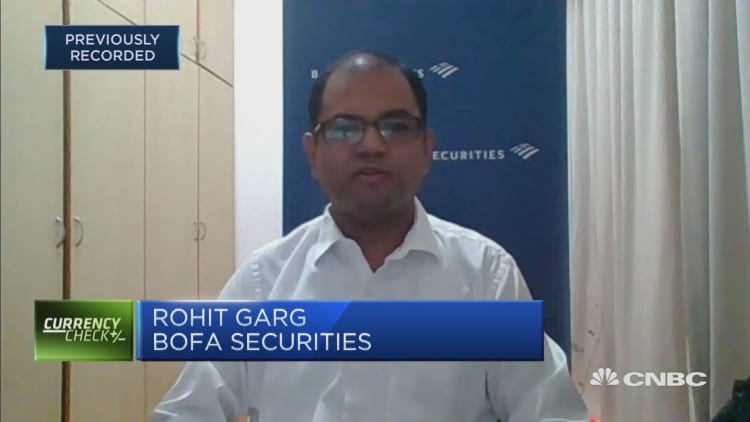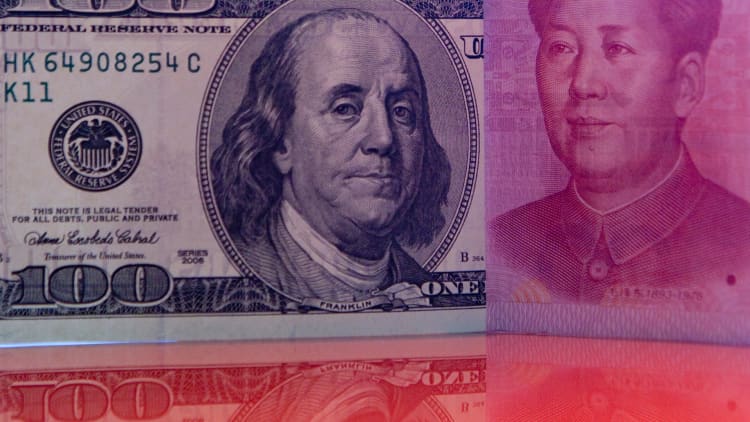
SINGAPORE — The Chinese yuan fell on Monday following recent months of rallying.
The weakness was triggered after the central bank changed rules on Saturday that made it cheaper for traders to short the currency. Shorting involves selling a borrowed asset, which can be a stock or currency, with the view that it will depreciate and can be bought back later at a lower price.
Over the weekend, the People's Bank of China (PBOC) cut the forex risk reserve ratio for forward contracts — from 20% to zero, according to a central bank statement. Banks used to hold 20% of sales for some currency forward contracts, which essentially lock in the exchange rate for the sale of a currency on a future date. They no longer have to do so.
Overall, what this tells us is that … they're definitely trying to give a signal that maybe they're unhappy with the current pace of appreciation.Rohit Gargdirector at Bank of America Merrill Lynch
The central bank move appeared to be aimed at stabilizing the Chinese currency, also referred to as the renminbi (RMB). As of last week, the onshore yuan — which is traded on the mainland — has surged some 6.6% since May to around 6.69 against the dollar. Last Friday, the currency rallied around 1.4%.
"In the next step, the (PBOC) will continue to maintain the flexibility of the RMB exchange rate and stabilize market expectations, so as to keep the RMB exchange rate basically stable at an adaptive and equilibrium level," said the statement on the PBOC website.
Analysts say the latest rule change may have the effect of tempering the recent strength in the yuan.
"Overall, what this tells us is that … they're definitely trying to give a signal that maybe they're unhappy with the current pace of appreciation," said Rohit Garg, director at Bank of America Merrill Lynch.
This move also indicates that perhaps the central bank is giving onshore corporations the option of a hedge against "any sort of dollar strength that can happen on the back of any sort of uncertainty that will be coming up in the next one and a half months," Garg told CNBC's "Street Signs" on Monday.
The U.S. election is due to take place in November and markets are watching it closely.

However, Garg is still positive on the yuan's strength.
"Now that China's growth is doing much better as compared to U.S. as well as the rest of the world, as well as the interest rate differential is also very much in favor of China, I would still think in the medium to long term, CNY (the onshore yuan) will still be intact in terms of its … outperformance," he said.
Analysts have pegged the yuan's strength to record spreads between Chinese and U.S. Treasury yields.
While the U.S. Federal Reserve has cut rates and indicated they will stay near zero for years, China's central bank has reversed the bulk of the decline in short-term rates – meaning that Chinese treasury yields are set to be above that of other major markets.
That could draw investors to Chinese government bonds, leading to an inflow into the yuan — hence boding well for the exchange rate.
On Monday morning, the onshore yuan weakened from last Friday's surge to above the 6.7 level again.
"The sharp appreciation in the CNY seen on Friday … has been mostly reversed this morning. Likely driving is a rule change over the weekend by the PBOC which makes it less expensive to short the CNY and signals less (concern) about currency weakness," wrote Tapas Strickland, director of economics and markets at the National Australia Bank, in a Monday note.


